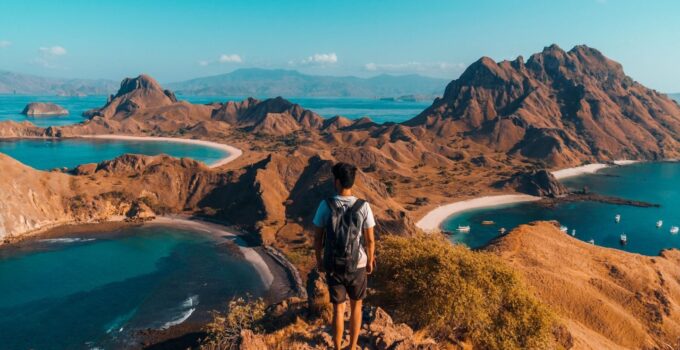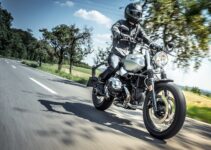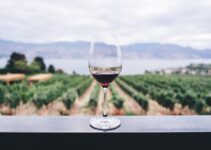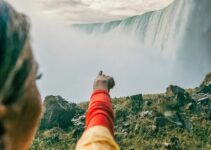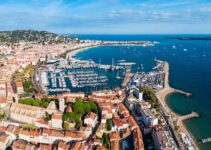Few places in the world deliver such a mix of rugged landscapes, ancient wildlife, and pristine coral gardens as the Komodo Islands. Stretching between Sumbawa and Flores in eastern Indonesia, the region’s waters are famous for their shifting colors, strong currents, and reefs teeming with life.
Every year, travelers and divers try to time their visit just right to catch the best conditions at sea.
But Komodo isn’t a one-season destination. Its moods change throughout the year. The sea can be calm and glassy one month, then wild and full of energy the next.
Knowing what to expect in each season helps you plan your route, choose the right type of cruise, and get the most from every snorkel or dive session.
Below is a guide through the rhythms of Komodo’s climate, what happens beneath the waves, and how tides and winds shape the experience on board.
The Rhythm of Komodo’s Seasons
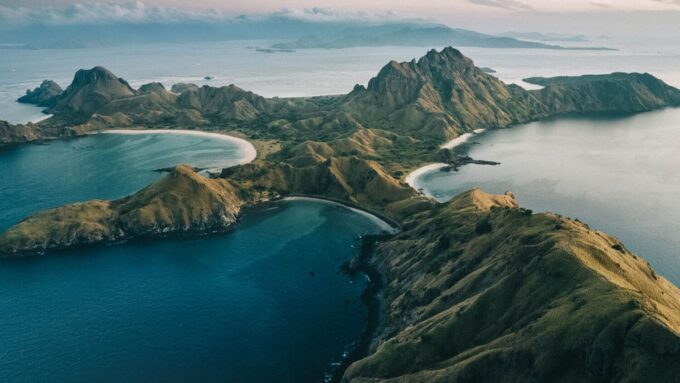
Source: pacifichighcruise.com
Komodo sits within the Lesser Sunda Islands, where seasons follow the pattern typical of eastern Indonesia: a distinct dry season and a wet one. However, local microclimates make things a bit more nuanced.
Here’s a breakdown:
| Season | Months | Typical Conditions | Notes for Travelers |
| Dry Season | April to November | Calm seas, great visibility, minimal rain | Best time for cruising and diving |
| Wet Season | December to March | Intermittent showers, occasional storms, humid air | Green landscapes and fewer crowds |
| Transition Months | March–April & November | Variable winds, improving or fading visibility | Good for flexible travelers |
During the dry season, winds tend to blow steadily from the southeast, keeping skies clear and the air crisp. The wet season, on the other hand, brings the northwest monsoon: warmer air, tropical rains, and a more unpredictable sea.
Many travelers time their Komodo yacht rental with the region’s seasonal shifts, choosing calmer seas and steady winds for smooth sailing.
Still, the wet months don’t mean you should avoid Komodo entirely. The park’s islands turn lush green, waterfalls swell, and many operators continue to run safe routes when the weather allows.
When the Sea Feels Just Right
Most sailors, divers, and liveaboard operators agree that April to early November marks the sweet spot for exploring Komodo by sea. The water stays calm enough for smooth crossings, visibility can reach up to 30 meters, and conditions remain stable for long stretches.
April to June offers a stunning mix: reefs bursting with color, warm water around 28°C, and clear skies without the crowds that arrive later. It’s also when plankton levels start to rise, attracting manta rays to famous sites like Manta Point and Makassar Reef.
July and August bring stronger winds from the south. The sea can get choppy in exposed channels, particularly between Rinca and Komodo islands, yet visibility remains excellent. Divers might spot schooling trevally and reef sharks in current-swept areas.
September to early November often feels like nature’s encore. The winds drop, the light softens, and the seas flatten again. It’s one of the most peaceful times to sail between the islands, with fantastic underwater clarity and balanced conditions both above and below the surface.
Rain, Wind, and How They Shape Your Route
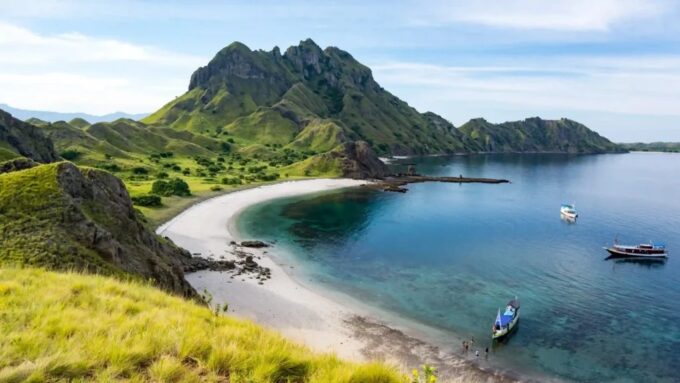
Source: komodoluxury.com
Weather in Komodo doesn’t just affect comfort; it determines accessibility. The region is known for fast-changing winds, especially around narrow straits and open channels. During the southeast monsoon, vessels typically anchor on the northern sides of islands where the sea stays sheltered.
In contrast, the wet season flips the pattern. The wind turns northwest, making the southern anchorages calmer while the northern shores can face swells.
If you’re planning a liveaboard cruise, expect itineraries to shift with these changes. Captains adjust routes daily, often choosing between Northern Komodo and Southern Komodo depending on wind and current forecasts.
Here’s a general idea of what that means in practice:
| Region | Best Months | Key Features | Typical Stops |
| Northern Komodo | April–November | Warm water, great visibility, gentle currents | Gili Lawa, Crystal Bay, Cauldron, Tatawa Besar |
| Southern Komodo | December–March | Cooler water, nutrient-rich upwellings, vibrant marine life | Manta Alley, Cannibal Rock, Pink Beach, Nusa Kode |
The Sea Beneath the Surface: Visibility and Temperature
Komodo’s position between the Pacific and Indian Oceans creates strong currents and unique underwater microclimates. The water clarity and temperature depend heavily on where you are and what time of year you visit.
- Northern sites tend to have warmer, clearer water (28–30°C) thanks to flow from the Pacific. Visibility can exceed 25–30 meters during the dry season.
- Southern sites are cooler (22–26°C) and often more nutrient-rich. The water may appear greenish from plankton blooms but that same nutrient density supports incredible coral and fish diversity.
For divers, switching between north and south feels like exploring two different ecosystems in one trip. The difference can be as striking as going from a tropical aquarium to a temperate kelp forest.
Tides and Currents
Komodo’s tides aren’t to be underestimated. The park lies at a point where two massive oceanic bodies exchange water, creating powerful flows through narrow channels.
These currents are both what make the region so rich and what demand respect from anyone at sea.
The main tidal patterns:
- Spring tides (during full and new moons) bring stronger currents and larger tidal ranges.
- Neap tides (half-moon periods) result in gentler conditions, perfect for beginners or relaxed dives.
Local operators carefully time each dive around these movements. At sites like Castle Rock or The Shotgun (Cauldron), entering the water even ten minutes off schedule can mean the difference between a gentle drift and a wild ride.
For snorkelers, the calmer bays such as Pink Beach, Siaba Besar, or Kanawa Island offer protection from the main current lines while still delivering healthy coral life.
When Marine Life Steals the Show
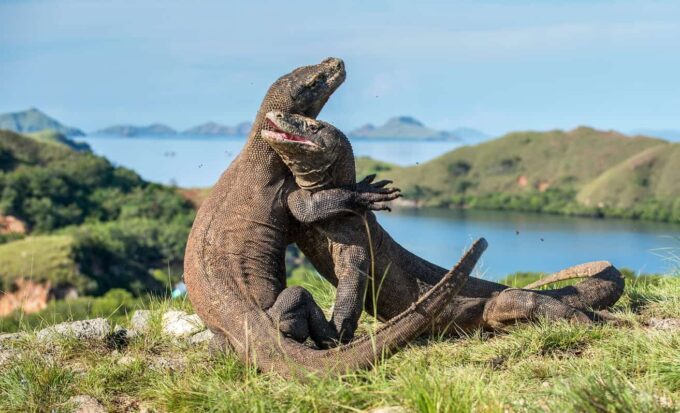
Source: breathedreamgo.com
Komodo’s biodiversity changes subtly through the seasons. While the park teems with life year-round, certain months bring special sightings.
January to March:
- Manta rays are at their most abundant.
- Southern dive sites shine with nutrient-filled water.
- Fewer boats mean you often have entire reefs to yourself.
April to June:
- Reef life flourishes as visibility improves.
- Manta rays remain active, and turtles are often seen nesting on nearby beaches.
July to September:
- Peak visibility in the north.
- Great time for spotting reef sharks, barracuda, and trevally.
- Occasional sightings of whale sharks in deeper channels.
October to December:
- Balanced mix of calm seas and rich marine activity.
- Coral spawning sometimes occurs, painting the water with floating pink clouds at night.
How Seasons Affect Your Cruise Experience
A multi-day liveaboard cruise is the most rewarding way to explore Komodo’s 29 islands. But the time of year shapes the experience significantly.
During the dry season, decks stay open for stargazing, and nights are cool enough for comfortable sleep even without air conditioning. Mornings are often glassy and golden, perfect for sunrise paddles or early dives.
In the wet season, the rhythm changes. Short afternoon rains bring a break from the heat, and cabins become cozy spots to relax while clouds pass overhead. Many travelers appreciate the sense of solitude since fewer boats operate then, and bays like Padar or Rinca feel far more intimate.
No matter when you go, it helps to pack with the sea’s temperament in mind:
- Light layers that dry quickly
- Reef-safe sunscreen and rash guards for long snorkel days
- Motion sickness tablets if you’re sensitive to rolling seas
- Dry bags for camera gear and electronics
- A light jacket for cooler evenings, especially between June and August
Photography and Light
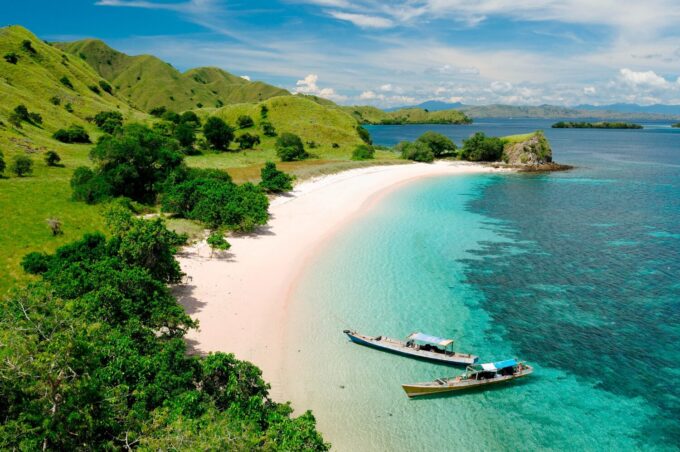
Source: hayesandjarvis.co.uk
For photographers, the dry season offers more predictable lighting. Mornings bring soft golden hues over the islands, while afternoons tend to stay clear. The lack of haze makes it easier to capture the gradient blues of Komodo’s waters.
During the rainy season, cloud cover and moisture in the air create dramatic atmospheres ideal for moody landscape shots. If you like mist rolling over volcanic peaks or reflections on calm water, those months can be surprisingly rewarding.
Underwater photographers often favor April to June for balanced light and visibility. During this window, plankton density is just enough to attract big animals without clouding the water too much.
How Long to Stay and Where to Base
Most liveaboard cruises around Komodo last 3 to 7 days, departing from Labuan Bajo on Flores Island. Shorter trips usually focus on the northern reefs, while week-long routes can reach as far south as Nusa Kode or even into the Sape Strait.
If you’re staying land-based, Labuan Bajo has become a comfortable hub with good hotels, restaurants, and easy access to daily speedboat tours. Staying there for at least four nights lets you explore both land and sea without rushing.
Recommended split for first-timers:
| Duration | What You’ll See | Suggested Base |
| 3–4 Days | North Komodo highlights, manta rays, Padar viewpoint | Liveaboard or Labuan Bajo |
| 5–7 Days | North & South reefs, Rinca dragons, Pink Beach | Liveaboard |
| 8+ Days | Full park loop including remote islands like Gili Motang | Expedition-style liveaboard |
Safety and Sustainability in Every Season
The Komodo Islands are part of a protected national park, and local authorities enforce strict guidelines for conservation.
Before booking, check that your operator holds a valid park permit and follows responsible tourism practices.
Sustainable travel tips:
- Choose boats with waste management systems and reef-safe products.
- Avoid touching coral or feeding marine life.
- Respect the Komodo dragon zones on Rinca and Komodo Islands by staying with guides.
- Support local communities by purchasing crafts or meals from small island vendors.
During monsoon months, some operators pause operations for maintenance, which helps reduce traffic and environmental pressure.
If you go during that period, look for smaller, locally owned charters that can adapt to changing conditions safely.
Sample Itinerary
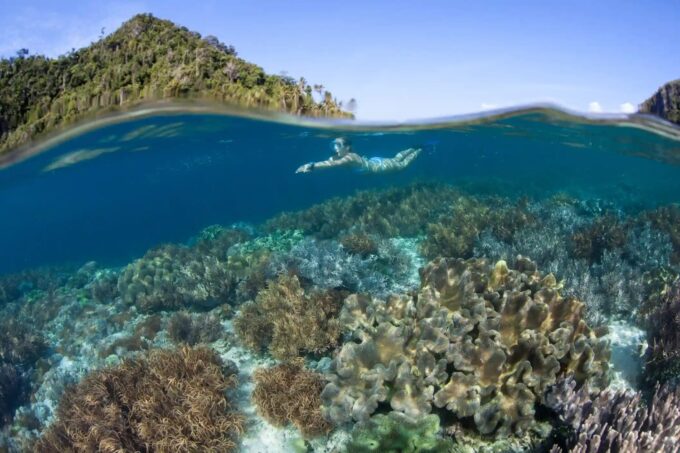
Source: komodoluxury.com
Here’s an idea of how a 7-day route might unfold when conditions align beautifully:
| Day | Highlights | Notes |
| 1 | Depart Labuan Bajo, snorkel at Sebayur Island | Calm start, easy current |
| 2 | Dive at Crystal Bay and Cauldron, sunset at Gili Lawa | Northern clarity |
| 3 | Manta Point and Siaba Besar | High manta activity |
| 4 | Trek Padar Island at dawn, sail south to Rinca | Iconic landscape views |
| 5 | Dive Manta Alley and Cannibal Rock | Cooler water, rich coral life |
| 6 | Pink Beach snorkeling, relax in Horseshoe Bay | Calm anchorage |
| 7 | Return via Kalong Island, watch flying foxes at dusk | Memorable farewell |
The order can shift depending on tides and wind, but this gives you a sense of pace – balanced, varied, and deeply connected to the rhythms of the sea.
Final Thoughts
There’s no single “best” time to explore the Komodo Islands. It really depends on what you seek – glass-clear water and steady sunshine, or solitude among emerald hills and stormy skies. Each season reveals a different character of the archipelago.
If your goal is calm sailing, predictable weather, and world-class diving, aim between April and November. If you crave color, quiet, and the occasional wild storm lighting up the night sky, December through March holds its own kind of magic.
What matters most is matching your expectations to the ocean’s pace. Once you tune into that rhythm, the Komodo Islands will show you a side of Indonesia that feels timeless, untamed, and unforgettable.

